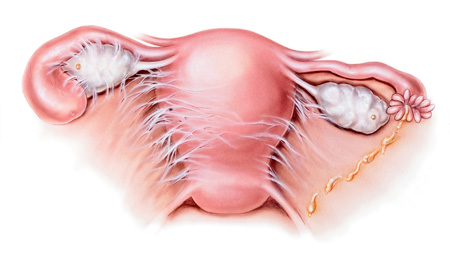Pelvic Adhesions
Pelvic Adhesions can affect the female reproductive organs (ovaries, fallopian tubes), the bowel, the area around the heart, the spine and the hand. They can cause a range of problems including infertility, dyspareunia (painful intercourse), pelvic pain and bowel obstruction or blockage. Adhesions can also lead to a complex set of problems called adhesion-related disorder (ARD).
Pelvic Adhesions are bands of scar tissue that can cause internal organs to be stuck together when they are not supposed to be. Most often, adhesions are the result of previous surgery, but some can occur following pelvic infection, and many times they accompany more severe stages of endometriosis. When adhesions are dense, or restrict the normal movements of internal organs like the bowels, pain can result. Uncommonly, adhesions can cause blockage of the bowels (intestinal obstruction).

Gynaecology Services
- Filmy adhesions
- Vascular adhesions
- Cohesive adhesions
- Abdominal adhesions
Adhesions can occur when the body’s natural healing process goes a little awry. Usually, the surfaces of the uterus, abdominal cavity, and fallopian tubes are slippery. This enables organs to move around each other easily.
However, when there is injury – from an infection, previous surgery, or an endometrial deposit – the surface can become “sticky.” This can cause organs getting stuck together. Scar tissue may form and hold the organs in an abnormal position. Scar tissue may also create web-like attachments between organs.
These adhesions can be thick and strong. Your organs may unnaturally pull on each other. This can cause pain, especially during sexual intercourse or during menstruation. In the case of Asherman’s syndrome, adhesions occur within the uterus. The adhesions may be few, or, in severe cases, they can cause the uterine walls to stick together almost completely.
- Chronic pain.
- Infertility.
- Bowel obstruction and an inability to pass gas.
- Urinary bladder dysfunction.
- Pain and difficulty having a bowel movement.
- Pain on movement such as walking, sitting or lying in certain positions.
